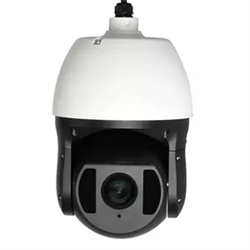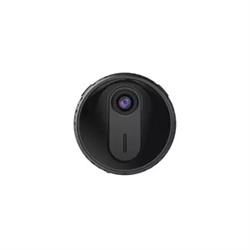The monitoring equipment mainly includes:
1. The all-in-one machine is dust-proof and moisture-proof. It has a protective cover and can be used indoors and outdoors.
2. The color gun camera is generally used indoors, if an outdoor protective cover is added, it can also be used outdoors.
3. Color dome camera, used indoors, easy to install where there is a ceiling.
4. Infrared camera, this camera is colored when there is enough light. When there is no light and the light is dark, the infrared light is turned on and it turns to black and white monitoring. It is suitable for dark places such as Internet cafes, underground passages, and garages.
Surveillance camera classification:
1. The surveillance cameras can be classified into industrial grade and household grade according to their use.
1. Industrial-grade surveillance cameras are required to be stable and reliable. In order not to be easily disturbed by the outside world, wired transmission methods will be used as much as possible. Moreover, most industrial-grade surveillance cameras are installed outdoors and have to withstand the wind and sun, so there is a big difference in appearance from household-grade cameras. In addition, the waterproof function is also indispensable for industrial cameras.
2. The general household-level surveillance cameras are not so strict. In order not to affect the overall decoration environment, but also to facilitate installation and eliminate the trouble of wiring, we will try to use the easy-to-deploy wireless WiFi transmission method.
3. The video data captured by the camera every day is not small, and the amount of data accumulated over time is very large.
1) The industrial level requires that the data of each camera be stored for more than 30 days, and it needs to be equipped with a dedicated hard disk video recorder to meet the demand, which will greatly increase the complexity of the monitoring system.
2) The data collected by the home camera will be stored on the cloud server via the Internet. This not only saves storage costs but also facilitates home users.
Second, from the different transmission methods, surveillance cameras can be divided into two types: wired and wireless.
1. The wired transmission is stable, fast, and not easily interfered with by external signals. It is the mainstream transmission method of the current industrial-grade camera.
2. Convenient wireless transmission, can break through the limitation of wired, very suitable for remote areas without wiring conditions. However, the wireless transmission distance is limited and it is susceptible to interference from external signals.
There are 3G wireless, WiFi, analog microwave, and other types of wireless transmission.
1) WiFi networking is convenient, and the transmission cost is low, which is very suitable for home use.
2) Wireless analog microwave needs to be deployed by professionals. Its transmission distance can reach 10~100km. There are three main bands, namely L-band 1.0-2.0GHz; S-band 2.3-2.7GHz; Ku-band 10.75-12.7GHz. Due to the high frequency of analog microwaves, it is not easy to be interfered with by external signals. It is an ideal wireless transmission solution for industrial-grade surveillance cameras.








